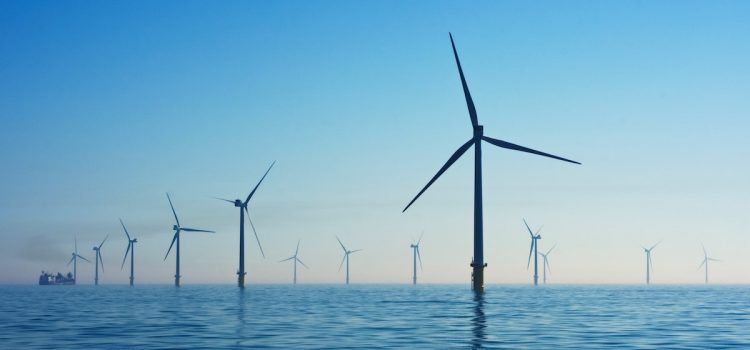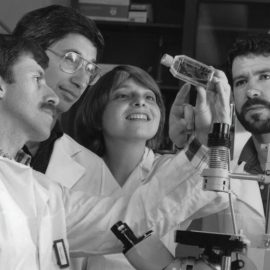

This article is an excerpt from the Shortform book guide to "Apocalypse Never" by Michael Shellenberger. Shortform has the world's best summaries and analyses of books you should be reading.
Like this article? Sign up for a free trial here.
Is the use of solar and wind energy good for the environment? Why are conservationists at odds with environmentalists?
The primary driver of climate change, and the most important issue to tackle, is society’s ever-growing energy consumption. Renewables are all the rage. However, as Michael Shellenberger explains, renewable energy has its own disadvantages and even harmful effects.
Read more to learn about the problems with renewable energy.
The Problem With Renewables
While wind and solar energy may seem like environmentally harmless sources of limitless power, that isn’t actually the case. Both are energy-diffuse and unreliable, leading to serious practical limitations that minimize their ability to replace other power sources and that impact the environment in their own harmful ways. Shellenberger details several problems with renewable energy, including deficiencies and negative ecological consequences of both solar and wind power. He also discusses their hidden economic costs, of which most people aren’t aware.
The first problem with solar power is its unreliability. Even if solar farms could be placed in a desert with 365 sunny days each year, the simple fact of seasonal change means there will be less light, and therefore less power, during winter months in which it’s needed most. Generating energy for the darkest times of the year would require even more solar farms to be built, which leads to the second problem—land use.
When it comes to the second problem with solar power, Shellenberger says that, for the US to meet its current electricity needs with solar farms, it would require more land than some Atlantic states. This is land that would be taken away from farming or natural habitats.
The third problem with solar power is waste disposal, just as with any other power plant. Nothing lasts forever, and, eventually, solar panels wear out. Those panels contain toxic materials that have to be carefully disposed of. However, most of our electronic waste is shipped to poor countries where those chemicals leak into the groundwater due to poor waste management infrastructure. Recycling is an expensive option; solar companies usually find it cheaper to simply produce new panels than recycle old ones.
| The Hidden Costs of Solar Power Despite their land use and efficiency issues, solar panels remain a popular solution to the problem of cutting down fossil fuel emissions. One proposed answer to the land use problem is to place solar panels in urban areas, such as large parking lots where they can also provide shade for cars. However, there are economic barriers in the form of large upfront costs for installation and the logistical challenges of putting them in place. Progress in solar power development could also accelerate waste management issues. Solar panels continue to become more efficient, but as with any technology, the impetus is to replace the old with newer models. This could result in many solar panels being replaced before they wear out, in most cases sending them straight into landfills. Experts warn of a deluge of “solar garbage,” including heavy metals that fall under hazardous waste regulations. |
The problems with wind power are similar to solar’s. Although the wind blows day and night, all year round, it isn’t consistent, and it’s highly unpredictable. Also as with solar, wind farms require a lot of land—more than 400 times that of an equivalent natural gas plant. Wind turbines also present a danger to wildlife. High-wind corridors ideal for wind farms are for the same reason the ideal migratory routes for birds and insects. Bats and large birds are especially vulnerable, and Shellenberger writes that conservation scientists are pushing back against wind farms even as environmental groups promote them.
(Shortform note: Efforts to reduce bird mortality from wind farms include selecting locations away from nesting grounds, migratory routes, and areas with lots of prey. In order to protect bat populations, studies have shown that ultrasonic deterrents can be used to keep them out of harm’s way. Despite the dangers wind turbines pose to avian populations, far more animals are killed by power lines, other human structures, and invasive predators such as cats. In the future, one potential solution may be the development of bladeless wind turbines.)
The Power Storage Problem
The final argument against wind and solar power is the issue of power storage, which is both a logistical and an economic problem. At present, electricity is as cheap as it is because it’s generated, transmitted, and used continuously through the shared electrical grid. Because wind and solar power aren’t consistent, the grid must keep fossil fuel plants on standby to pick up the slack when renewables fail (which is costly and counterproductive to renewables’ mission to replace fossil fuels). To power the grid entirely with renewables would mean finding a way to store massive amounts of power for periods when wind or solar power ceases to function.
(Shortform note: As a point of comparison, the US power grid has an electrical generation capacity of 12,000 gigawatts but a storage capacity of only 25 gigawatts. Our electrical infrastructure bypasses the need for storage by delivering electricity as soon as it’s produced. Energy usage fluctuates throughout the day and throughout the year, and power companies ramp up production during times of highest demand. In order to meet peak power needs and prevent blackouts, the US Department of Energy is working to update the grid’s infrastructure, make it more resilient, and enable sharing power over large transmission networks.)
Large-scale power storage is both prohibitively expensive as well as a logistical nightmare. While advances in battery technology have done wonders for personal electronics, they don’t come close to meeting the scale of storage needed for the whole power grid, which would cost hundreds of trillions of dollars. Proposals to store energy hydraulically (by using renewables to pump water uphill behind hydroelectric dams), as well as attempts to store energy by producing hydrogen, have proven unworkable from an engineering standpoint. Shellenberger suggests that as much as wind and solar power meet the romantic ideal of “natural energy,” they simply don’t meet the energy needs of present-day or future generations.
(Shortform note: Despite Shellenberger’s assertions, power companies are moving forward with industrial-scale battery storage systems to integrate wind and solar power into the grid. One example is the Hornsdale Power Reserve in South Australia, providing 150 megawatts of electricity stored in lithium-ion batteries. However, according to the National Renewable Energy Laboratory, battery storage systems aren’t necessarily the most economical solution. Dangers of large battery storage systems include overheating and the release of toxic gases.)

———End of Preview———
Like what you just read? Read the rest of the world's best book summary and analysis of Michael Shellenberger's "Apocalypse Never" at Shortform.
Here's what you'll find in our full Apocalypse Never summary:
- An assessment of the climate crisis from a rational perspective
- How climate change alarmists are doing more harm than good
- The problems with renewable energy and why we should switch to nuclear






